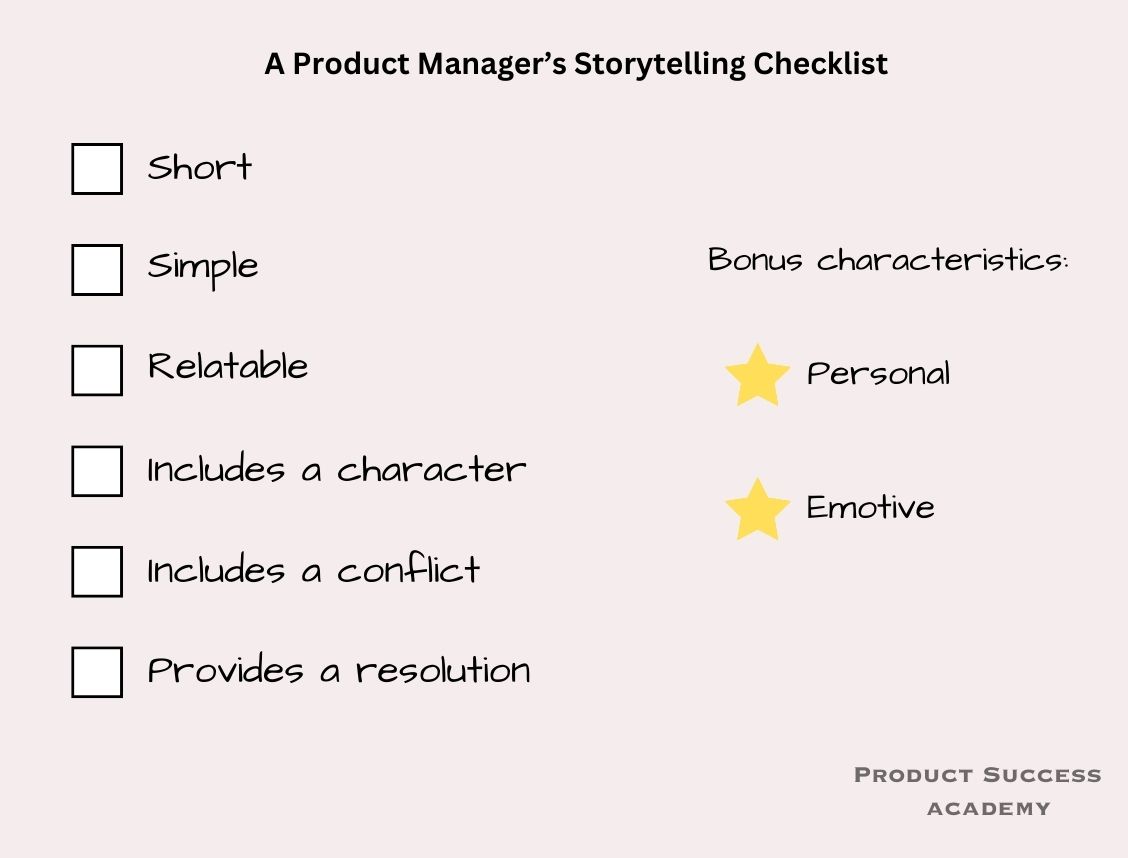When you think of the most captivating Product leaders, who do you imagine? Are you imagining Steve Jobs speaking at an Apple keynote? Or Elon Musk, telling us how SpaceX will allow humans to colonize space? Or how Tesla will help to transition the world onto sustainable energy? There are many other business leaders, who are just as, if not more successful as them in the traditional sense, i.e. they drive massive revenues and profits for their companies. So why is it that Steve Jobs’s keynotes are the ones that stubbornly remain in our collective memories? And why are Elon Musk’s larger-than-life ambitions, whether you like him or not, the ones that continue to spark debate and conversation?
I believe it’s because both of these Product leaders had one major thing in common: their mastery of the art of storytelling. Through storytelling, Steve Jobs was able to show us, not just how the iPhone would be better than other existing smartphones but how our lives would be forever changed by a new device that could fit into our pockets. Millions of people tuned in to watch Elon Musk announce the Cybertruck, not because they were interested in hearing the technical details of how it was built, but because they knew that Musk would leave them inspired and energized by his vision for the future of the automotive industry.

Studies have shown that stories are more memorable than facts. Stanford’s Graduate School of Business found that when people listened to pitches containing facts, figures and a story, only 5% remembered the statistics but over 60% remembered the stories.
As Product Managers, we’re already used to telling stories. We write pitch decks, demo new features, and are often trying to sell our product vision internally. But while many of us rely on data, facts & features to help make our case, how can we use stories to help us craft a compelling narrative to create a connection with our audience? How can we use this skill to inspire our teams & create alignment around vision?
Below are 3 practical strategies to help Product Managers become better at storytelling:
1. Understand the basics of telling a good story
There are a few basic elements to every good story. A good story is:
Short & simple: focus on conveying your message in the briefest & simplest way possible. Avoid unnecessary details that may distract or confuse your audience. Each word matters, so be intentional with your choice of words.
Relatable: understand your audience and ensure that your story is something that they can relate to. Make them feel ‘seen’ by bringing them back to an emotion or an experience they have had before and this will help them to connect with your story on a much deeper level.
Includes a character: a character, who is relatable (see point above) experiencing a struggle or a conflict who helps to drive the narrative forward
Includes a conflict: a conflict or a struggle adds tension to your narrative, keeps your audience invested and gets them on your side as they root for your character to succeed.
Provides a resolution: nobody likes a cliffhanger. Your character does not always need to succeed, however you need to provide closure to your audience by ensuring that they either overcome an obstacle or that they learned a valuable lesson.
In a Product Management context, you could use the above guidelines to ‘create a story’ around anything, be it your entire Product vision, or specific opportunities or problems that you’ve noticed within your Product.
For example for a business like Airbnb, their entire origin story could be framed within this character, conflict and resolution framework:
Character: A graphic design professional, looking to book a last minute cheap hotel in San Francisco so that he can attend a design conference.
Conflict: All hotels are overbooked due to the conference and other events happening in the city at the same time
Resolution: Lots of people in San Francisco had spare rooms in their homes that were unoccupied. Therefore, those looking for accommodation could rent a room at a fraction of the price of a hotel room and the home-owner could make some income.
The story is short & easy to understand. The problem is relatable; who hasn’t experienced trying to book something at the last minute and being disappointed with the available options and the prices?
For specific business problems that you’re looking into, the framework could look like this:
Character: 4000 users are abandoning their shopping carts each month
Conflict: Unable to find shipping fee in the cart, they don’t know how much they’re going to pay in total. How can they shop with peace and place an order if they don’t know how much they’re going to pay?
Resolution: Making the shipping fee more visible in the shopping cart and on earlier pages, so that users are not afraid of hidden costs or added fees and can place an order with peace of mind.
In the above example, the ‘character’ is the number of users that are experiencing a specific problem.
Bonus tips for excellent storytelling:
Make it Personal
This is a technique used often by some of the greatest public speakers. You can recount a story from your childhood or your personal life and mention a time where you experienced a struggle or a conflict. In the end, the audience wants to see you as a real person, not someone simply stating facts and figures. It will help to create empathy with you, and will help to engage your audience in a deeper way.
Make it Emotive
We are emotional beings and often resonate better when spoken to on an emotional level, rather than an intellectual one. Steve Jobs once said:
“We don’t stand a chance of advertising with features and benefits and with RAMs and with charts and comparisons. The only chance we have of communicating is with a feeling.”
This is why it’s often recommended to focus on the benefits of your product and how they can make customers feel, rather than on its features.

2. Become a student of Marketing
If you want to learn from the experts, when it comes to storytelling, those experts are sitting over in your Marketing department. There’s a lot to learn from Marketers in terms of how they craft compelling messages in order to engage the attention of audiences. They are the experts in using narrative & visuals to create a lasting emotional impact on audiences, in building trust & credibility around your brand and in helping you to stand out from the competition. Many Product leaders have been avid students of Marketing and vice versa; leaders like Steve Jobs have influenced the field of Marketing as well.
As a Product Manager, what you can do is immerse yourself in Marketing case studies from publications like adage.com, adweek.com or thedrum.com. Thedrum.com in particular has an ‘ad of the day’ editorial, that dissects a new ad campaign everyday and explains why it’s so effective.
You can also read books on the psychology of advertising & persuasion, as storytelling is often a key theme that is discussed. Two of my favorite Marketing books on this topic are:
The Elements of Persuasion: Use Storytelling to Pitch Better, Sell Faster & Win More Business by Richard Maxwell & Robert Dickman: this book offers alternative storytelling frameworks to the ones discussed above and also delves deep into an audience-centric approach: ie how to understand your audience and tailor your story their needs and perspectives.
Resonate: Present Visual Stories that Transform Audiences by Nancy Duarte: This book offers a ton of practical techniques to help you create compelling visual presentations that will resonate with your audience. The author also details storytelling frameworks like the Hero’s Journey and provides countless case studies and real-world examples to illustrate key concepts.
3. Practice turning your everyday Product Management work into stories:
Practice makes perfect, and there are many opportunities within your day to day work as a Product Manager that you can use to start sharpening your storytelling skills.
The most obvious one is a Roadmap presentation. This is perhaps one of the most important presentations you will give to your colleagues as it relates to the future of the Product. This is the perfect time to think deeply about how you will connect with and resonate with your colleagues, instead of just presenting them with a list of features. Take this opportunity to describe what problems your customers are facing (ie the character and the conflict) and how your Product can resolve it for them (ie the resolution).
You can even employ the same techniques in smaller scale feature demos to smaller audiences. Your demo’s narrative can be all about the feature that you built, or it can be about what problem you’re solving for your customer – the latter will definitely be more effective and memorable for your audience.
A technique employed by Amazon, called the ‘Working Backwards Method” is one that really helps Product Managers to get into the habit of storytelling. It involves Product Managers writing a press release before the development of the product or feature even begins, imagining that the Product is ready to ship. So before a single line of code is written, a Product Manager will draft a Press Release (with the audience being the Product’s customer), describing the benefits of that product/feature to the customer. The press release must contain, along with other details, a quote from someone at the company explaining in an inspirational way what that product/feature was developed for and what they hope it will do for the customer. Getting into the habit of communicating the benefits of your Products in this way will ensure that storytelling is at the center of your Product Development process.
Conclusion
Storytelling is an important skill for Product Managers to master. It can help them inspire their teams and create alignment around their vision. In order to improve their storytelling skills, Product Managers should start by understanding the basics of good storytelling, study Marketing campaigns and case studies and practice it in their everyday work.
Are there any other techniques that Product Managers can employ to improve their storytelling skills? Let me know what you think in the comments below:



Leave a Reply